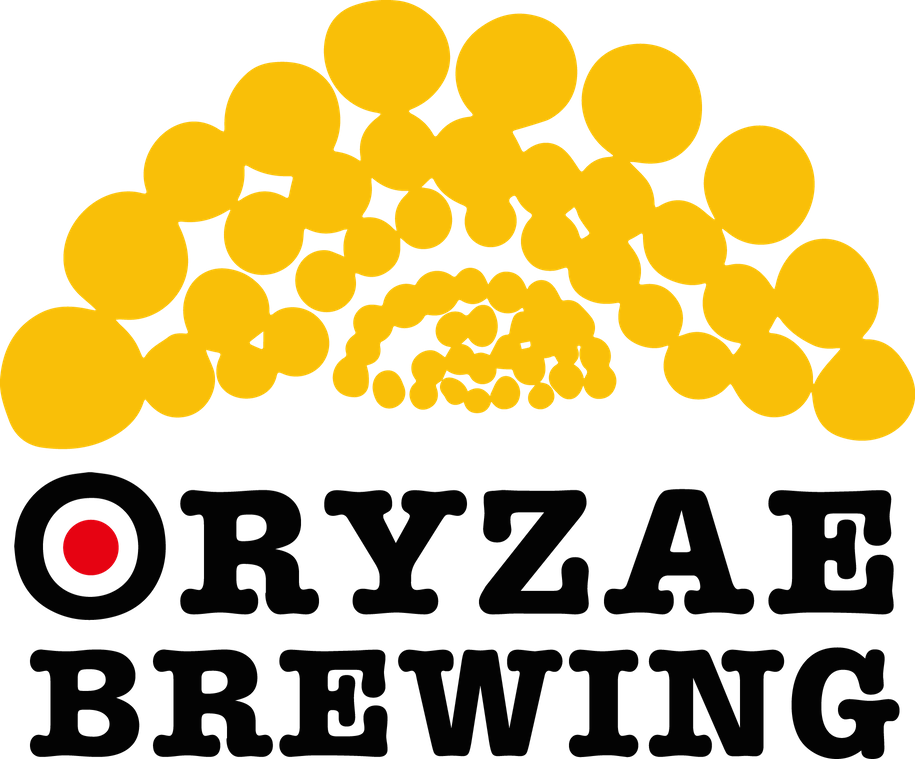今回は浸漬について 前回は原料の麦、米についてお話ししました 米は酒造りや味噌作りなどの麹と同じですので細かいお話は省略します 浸漬は酒米などの場合、限定吸水を行いますが うちの場合酒米を磨いてもせいぜい70〜80%止まりです なので、オリゼーブルーイングでは食用米、酒米ともに限定吸水は行いません お米は蒸す作業の前日の夕方から洗いを開始します 洗いすぎは良くないとか、しっかり洗ったほうが良いとか色々意見はあります 最初の頃は手作業でで3、4回ほど洗いとすすぎを繰り返していたのですが、 その後洗米機を導入してから、驚くほど蒸米の捌けが良くなりましたやはり手洗いは糠がしっかり落とせていないようです 洗米時間は3分ほどですが、驚くほど差があります もし手洗いで捌けが良くないなぁと悩んでいる方は、一度しっかりと洗ってみると良いかもしれません 洗米後は、吸水です 12〜15時間ぐらいです これも皆さんそれぞれ作法があると思いますが、食用米の場合は神経質にならなくても良いです 酒米のように70%以下まで磨くと話は別になります 吸水後は翌朝の張り込みまで放っておきます ー大麦ー 大麦の場合は逆に限定吸水となります 米はある程度水分を吸うと止まる性質があるのですが 大麦はブヨブヨになるまで水を吸い続けます ですので、自分の環境で適切な温度と吸水時間をテストしてみてください 水の温度で大きく吸水スピードが変わりますので、逆を言うとスピードの調節がある程度可能とも言えます うちの場合は20度を2時間30分を基準に、そこから調整しています 仕上がりを時間で見るのではなく、必ず大麦を割って、断面図から吸水具合を確認するようにしています 断面図で水の染み込み具合がわかりますし、爪で押し割った時の柔らかさの感覚で判断します 規模によっては数百kg単位で処理するところもあります この場合はさらに工程に要する時間や麦に付いている付着水なども考慮しながら次の水切りや蒸しの工程に入ります 麦の場合は数時間の限定吸水なので、スケジュール的には 朝一番に洗麦、浸漬→昼前後に蒸し となります 米の場合は 朝一番に水切り→午前中蒸し みたいなスケジュールが多いです 以上オリゼーブルーイングの浸漬工程になります 酒屋万流ですので、正解はありません 環境も気候も原料も異なりますので、あくまで参考程度にされてくださいね This time, let's talk about soaking. In the previous discussion, we talked about the grains used as raw materials, such as barley and rice. Since rice is similar to koji used in sake brewing and miso making, I will skip the details. When it comes to soaking, in the case of sake rice, we perform limited water absorption. However, in our case, even if we polish the sake rice, it remains at around 70-80% polishing ratio. Therefore, at Oryzae Brewing, we do not perform limited water absorption for both eating rice and sake rice. We start washing the rice from the evening of the day before the steaming process. There are different opinions about whether washing too much is not good or if it is better to wash it thoroughly. Initially, we washed and rinsed the rice manually about 3 or 4 times, but after introducing the rice-washing machine, the steamed rice became remarkably less sticky. It seems that hand washing does not remove the bran properly. Although the washing time is about 3 minutes, there is a surprising difference. If you are struggling with poor rice handling when washing by hand, it might be a good idea to try washing it thoroughly once. After washing the rice, it's time for water absorption, which takes about 12 to 15 hours. Each person may have their own method, but you don't need to be too concerned about it when using eating rice. However, it is a different story when polishing it like sake rice to a polishing ratio of 70% or less. After water absorption, we leave it until the next morning's preparation. - Barley - In the case of barley, it is the opposite, limited water absorption is performed. While rice has a characteristic of stopping water absorption to a certain extent, barley continues to absorb water until it becomes mushy. Therefore, please test the appropriate temperature and soaking time in your own environment. The water temperature greatly affects the speed of water absorption, so it can be said that there is a certain degree of speed adjustment. In our case, we use 20 degrees Celsius as the baseline and adjust from there, taking about 2 hours and 30 minutes for water absorption. Instead of judging based on the time, we always crack the barley and check the degree of water absorption from the cross-section. By looking at the cross-section, you can see how well the water has penetrated, and you can judge the softness by pressing it with your fingernail. Depending on the scale, some places process hundreds of kilograms. In this case, the time required for each step and the residual surface water on the barley are also taken into consideration before moving on to the next steps of draining and steaming. For barley, since it only requires a few hours of limited water absorption, the schedule is as follows: - Washing and soaking the barley in the morning - Steaming around midday For rice, the schedule is often as follows: - Draining the rice in the morning - Steaming in the morning These are the soaking processes at Oryzae Brewing. As a sake brewery, there is no definitive answer. Environments, climates, and raw materials vary, so please take this as a reference only.

“How to brew Oryzae Beer 2.浸漬(2.Steep)” への2件のフィードバック
Hi! This is fascinating! When preparing barley for Koji inoculation, do you only crack the barley, soak, then steam? I’m wondering if you let the barley germinate some (after soak), then steam and cool prior to Koji spore application. Thanks!
Thank you for your question!
The process for making regular barley and rice koji is quite simple: soaking, steaming, cooling,and inoculating with koji spores.
However, there is a requirement to use hulless barley for this process. This is explained in more detail in the following link:https://oryzaebrewing.com/2023/06/15/oryzae-beer-製造方法%E3%80%801-原料obtaining-ingredients/
In the traditional Japanese method of making koji, germination or cracking is not used.
What I am currently experimenting with is not barley, but a method of sprouting rice hulls kernels and turning them into koji. This falls under the category of Rice Malting. It allows for a usage similar to malted barley in beer production.
“How to brew Oryzae beer” outlines the process for brewing the beer that is currently being sold.
I apologize if this sounds a bit complex! If there are any parts you don’t understand, feel free to ask.